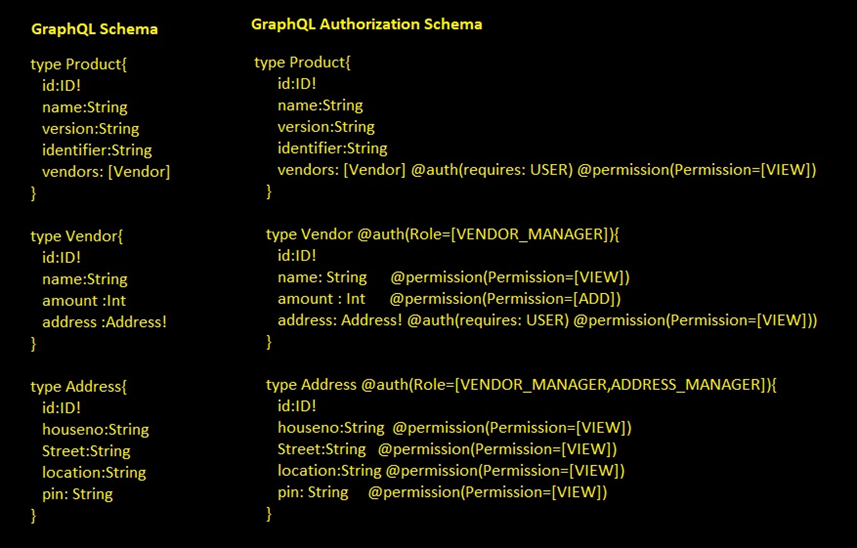Optimizing Fine-Grained GraphQL Access Control and Query Performance
Fine-grained authorization in GraphQL is addressed, along with query optimization at both the GraphQL and database layers.
Join the DZone community and get the full member experience.
Join For FreeGraphQL is both a query language for APIs and a runtime for executing those queries with your existing data. It offers a comprehensive and clear description of the data available in your API, allows clients to request precisely what they need without excess, facilitates the evolution of APIs over time, and supports robust developer tools.
GraphQL Access Control and Query Optimization
Access Control
Authorization is a set of rules or business logic that determines whether a user, session, or context has the access control list (ACL) to perform certain actions or view specific data.
Such behavior should be enforced at the business logic layer. While it might be tempting to place authorization logic directly within the GraphQL layer, it is generally more appropriate to handle it elsewhere.
Query Optimization
Optimizing GraphQL queries involves techniques such as minimizing unnecessary data fetching and processing to improve response times and reduce server load. This results in a more efficient application, offering a better user experience, enhanced user engagement and retention, and increased server scalability.
Ways to Optimize GraphQL Query
- N+1 (Batched Loading)
- Over-Fetching and Under-Fetching
- Caching for Reduced Latency
- Pagination
Enhancing GraphQL Access Control and GraphQL Query Optimization
Authorization Engine validates node and field permissions using ACL (access control list) and optimizes GraphQL queries based on the permissions. Additionally, the N+1 Resolver improves performance by consolidating queries. This approach addresses the N+1 problem. 
Actors
- GraphQL Query: A request sent by a client to a GraphQL server to fetch specific data.
- GraphQL Engine: Refers to a service that allows you to execute GraphQL queries.
- Authorization Engine: Validates the permissions of nodes and fields using ACL and optimizes the GraphQL query based on field permissions.
- N+1 Resolver: Reduces the overhead and latency associated with multiple database queries, improving performance and efficiency.


Enhancing Access Control
Existing Implementation
Let’s assume an app has Products, Vendors, and Addresses. Accessing Vendor and Address data requires user authentication, which can be easily handled in resolvers.
However, Vendor data is restricted to admin users, and some vendor fields are accessible only to specific roles. On the other hand, products are public and can be viewed with the Product Owner role. Running the query mentioned (Figure 3) will return product data along with associated Vendor and Address data, leading to a security issue.
Enhanced Implementation
Node and fields of query get validated as per user’s permission, and optimized GraphQL query is generated.


Figure 4 is an example of how you might implement custom authentication in a GraphQL API using Node.js. In this code, the role is extracted from the Authorization header and then used, along with the query, to validate authorization.

In this example, we're using role and permission of a user from session or request that control access to specific queries and mutations in the GraphQL schema. We have defined the role and permission rules in GraphQL schema for all users.
This method recursively checks the role and permission on all nodes and fields. If a node or field is not permitted, then it performs one of the following actions based on config:
- Remove node or field.
- Return field or node with an error message.
- Throw exception.
Once the GraphQL query is validated against the schema, this method will return the optimized GraphQL query.
Enhancing ORM Query Optimization Using N+1
Existing Implementation
It is a technical issue that impacts the performance of a query. It can occur in applications that use an Object-Relational Mapping (ORM) framework to access a database.
It typically arises when the application needs to load a collection of related entities from the database.
Let's assume there are 2 products; it needs to make 1 query to retrieve the products and 2 additional queries to fetch the vendors for each product individually.


One query retrieves the list of products, and a separate query fetches the vendors for each product. The number of vendor queries equals the number of products.
Enhanced Implementation
Once the request reaches the N+1 resolver, the N+1 resolver optimizes queries to minimize the number of database requests by reducing them to a single query for the main data and an additional query for related data, effectively mitigating the N+1 problem.
- Main Data Query: A single query that retrieves the main set of data required for the application.
- Related Data Query: An additional query fetching any related data necessary to complete the dataset.



After all query resolvers have been completed, the server returns the optimized data to the client in JSON format.
Conclusion
We have outlined that implementing fine-grained authorization mechanisms, along with enhanced security measures, is crucial for securing a GraphQL API. This includes both node-level and field-level security.
As this article describes, the N+1 problem occurs when an unoptimized query leads to excessive database calls in GraphQL. We have provided a solution to overcome the N+1 problem. It decreases database server resource usage, resulting in cost savings and better scalability. Additionally, by enhancing query performance, this improves the user experience by reducing query response times.
Opinions expressed by DZone contributors are their own.

Comments